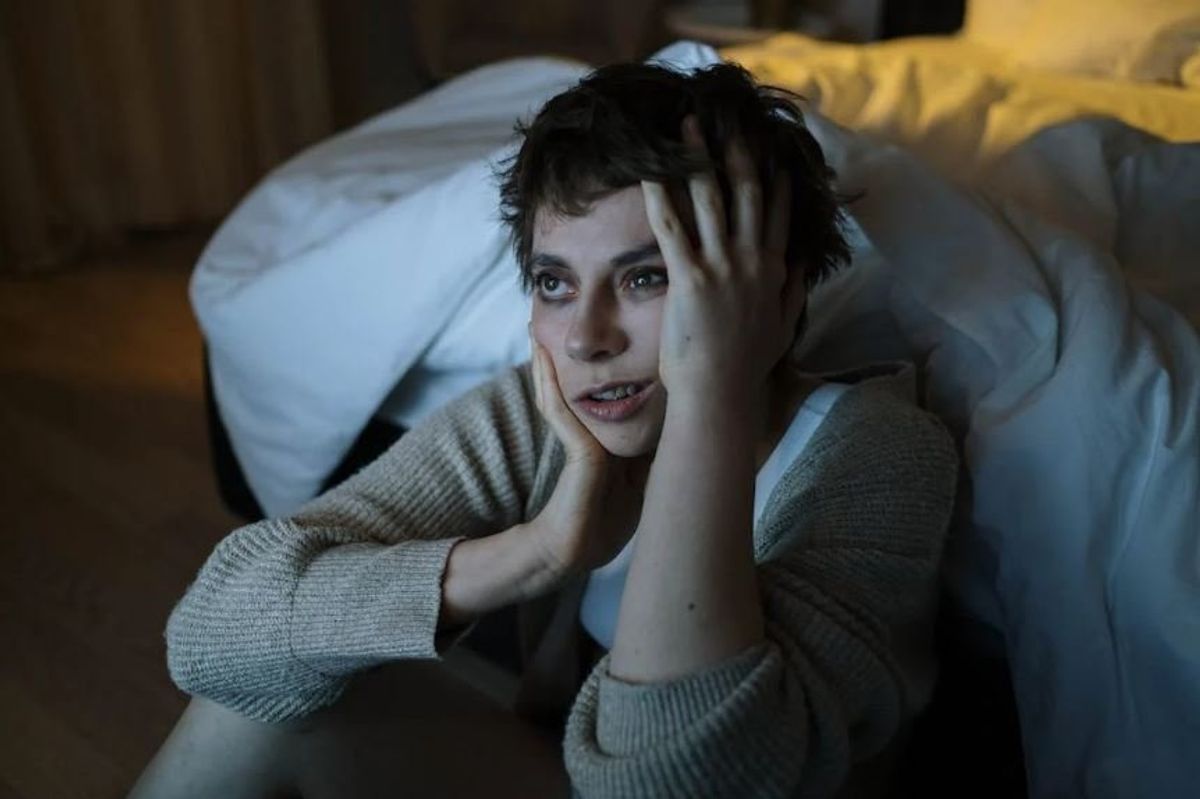Scientists have just discovered the ‘anxiety gene’ and what turns it off
This could completely change how we treat anxiety and depression.

A young woman struggles with anxiety.
Living with an anxiety disorder can feel like a constant battle against an invisible enemy. People with anxiety disorders feel constant, excessive worry, restlessness and irrational fears, often accompanied by physical symptoms such as rapid heartbeat, tightness in the chest and difficulty breathing.
These overwhelming feelings cast a shadow over daily life and make it difficult to focus or enjoy simple pleasures. Anxiety disorders can also feel isolating, as the sufferer may struggle to communicate their feelings, making it hard to receive support and understanding.
Anxiety disorders are among the most common forms of mental illness and studies show that an estimated 31.1% of U.S. adults experience an anxiety disorder at some time in their lives. Around half of all people who suffer from anxiety disorders go into remission at some point.
The interesting thing about such a common mental health problem is that the cause of anxiety disorders is currently unknown. But they’re believed to stem from a combination of factors that are developmental, psychological, environmental and genetic in nature.
\u201cGenetic Driver of Anxiety Discovered\n\nAn international team of scientists has identified a gene in the brain responsible for anxiety symptoms and found that modifying the gene can reduce anxiety levels, offering a novel drug target for anxiety disorders. The discovery highlights\u2026\u201d— Neuroscience News (@Neuroscience News) 1682457867
However, all of that may soon change. Researchers at the University of Bristol have identified a gene responsible for driving anxiety symptoms in mice and learned how it can be suppressed. The research was first published in Nature Communications.
To gain deeper insight into the underlying causes of anxiety, scientists restrained the mice for 6 hours to elicit a stress response and then examined their brains at a molecular level.
The researchers realized that the stress response resulted in elevated levels of 5 microRNAs (miRNAs) in the amygdala, determining which genes in a cell are expressed and which are not. The amygdala is the brain's integrative center for motivation, emotions and emotional behavior.
Most importantly, the researchers noted that the gene Pgap2 caused behavior associated with anxiety and miR483-5p worked as a molecular “brake” to prevent the feelings of anxiety.
\u201cAnti- anxiety gene found. \u2764\ufe0f\u201d— Pepper (@Pepper) 1682909508
To put it simply, researchers have determined the gene that creates anxiety symptoms and the gene that puts a stop to them. This revelation could lead to new medications that target and suppress the specific cause of anxiety in the human brain. It may also completely change the current trial-and-error approach that doctors use to treat anxiety through medications.
“miRNAs are strategically poised to control complex neuropsychiatric conditions such as anxiety. But the molecular and cellular mechanisms they use to regulate stress resilience and susceptibility were until now, largely unknown,” Dr. Valentina Mosienko, one of the study’s lead authors said, according to Neuroscience News.
“The miR483-5p/Pgap2 pathway we identified in this study, activation of which exerts anxiety-reducing effects, offers a huge potential for the development of anti-anxiety therapies for complex psychiatric conditions in humans.”
The findings are exciting to many people who wouldn't mind having their anxiety gene turned off right about now.
Omg yay they found the anxiety gene. Poke it till it turns off.
— Johanna M.🧚🏼♀️ (@JM_Luna) May 1, 2023
Scientists in the UK think they have located the gene that causes anxiety. I’m gonna need them to delete mine immediately
— Yagoobian (@GnosticGnocchi) April 25, 2023
The next step for researchers is to see if further research can be validated in humans.
This important development comes at a time when anxiety and depression are on the rise across the globe. According to the World Health Organization, the COVID-19 pandemic triggered a 25% rise in anxiety and depression worldwide.
- What's rape anxiety? This woman explained it to her favorite men, and they were shocked. ›
- Ever heard of emetophobia? The oddly common phobia often misdiagnosed as anxiety or anorexia ›
- Ryan Reynolds revealed how intense his anxiety can be. Here's how he manages it. ›
- Therapist explains panic attacks and how to control them - Upworthy ›
- How Gen X and boomers handled anxiety and depression - Upworthy ›
- Mom shares mantra song to help kids and adults stop worrying - Upworthy ›
- Health experts created a patch that can repair damaged hearts - Upworthy ›
- Mans builds his stressed fiancee an 'anxiety chair' and sweetly (but firmly) puts her in time-out - Upworthy ›

